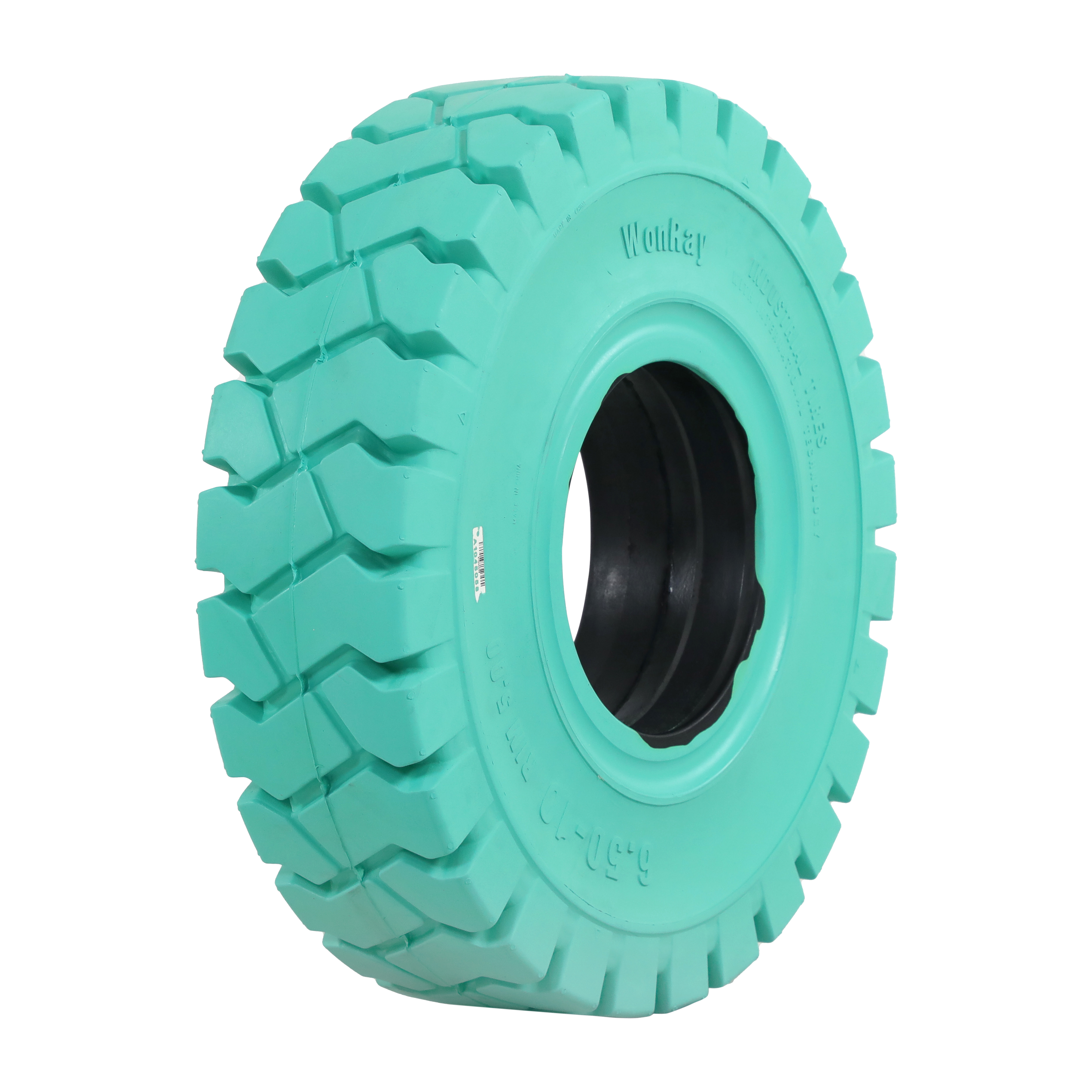Introduction:
In the realm of industrial vehicles and specialized equipment, solid tires have long played an indispensable role. Compared to traditional pneumatic tires, solid tires have gained widespread market recognition for their durability, safety, and low maintenance costs. However, with the advancement of Industry 4.0, increasingly stringent environmental regulations, and the emergence of new application scenarios, solid tires are undergoing a profound transformation. This blog will delve into the technological innovations, market trends, and future opportunities in the solid tire industry, offering insights into its future development.
1. Technological Innovation: Leaps in Materials and Intelligence
The core advantage of solid tires lies in their unparalleled durability and stability, but this does not mean they have stagnated. In recent years, advancements in material science and manufacturing processes have opened up new possibilities for solid tires.
- Application of High-Performance Materials: Traditional solid tires are primarily made of rubber, but today, new composite materials such as polyurethane (PU) are becoming mainstream. PU materials not only offer superior wear resistance and impact resistance but also maintain stable performance under extreme temperatures. For example, in cold chain logistics, PU solid tires can retain elasticity in low-temperature environments, avoiding performance degradation caused by hardening.
- Lightweight Design: The weight of solid tires has always been a drawback, especially in scenarios requiring high mobility. However, through structural optimization and the use of new materials, some manufacturers have successfully developed lightweight solid tires that retain durability while reducing vehicle energy consumption.
- Intelligent Upgrades: With the development of Internet of Things (IoT) technology, smart tires are becoming a reality. By embedding sensors in solid tires, users can monitor tire temperature, pressure, and wear in real time, enabling predictive maintenance and reducing unexpected downtime. This trend toward intelligence not only improves equipment efficiency but also opens up new service models for tire manufacturers.
2. Environmental Trends: The Green Competitiveness of Solid Tires
Globally, sustainable development has become a consensus across industries. Due to their unique design and material properties, solid tires are emerging as key players in the eco-friendly tire market.
- Reducing Tire Waste: At the end of their lifecycle, pneumatic tires often face recycling challenges, while solid tires, with their integrated design, are easier to recycle and reuse. Some manufacturers have begun exploring ways to convert used solid tires into recycled rubber or other industrial materials, thereby reducing environmental impact.
- Lowering Carbon Emissions: Solid tires require no inflation, avoiding vehicle downtime and resource waste caused by leaks or blowouts. Additionally, their long lifespan reduces the frequency of tire replacements, indirectly lowering carbon emissions during production and use.
- Meeting Green Manufacturing Needs: In logistics, warehousing, and manufacturing, an increasing number of companies are adopting electric forklifts and automated guided vehicles (AGVs), which demand higher environmental performance from tires. Solid tires, with their pollution-free and low-maintenance characteristics, have become the ideal choice for these green devices.
 3. Market Opportunities: From Traditional Fields to Emerging Applications
3. Market Opportunities: From Traditional Fields to Emerging Applications
The application areas of solid tires are continuously expanding, from traditional industrial vehicles to emerging electric and automated equipment, showcasing a trend of diversified market demand.
- Continued Growth in Traditional Fields: In sectors such as forklifts, hand trucks, and airport ground support equipment, solid tires remain the mainstream choice. With the rapid development of global logistics and warehousing industries, demand in these traditional fields will continue to grow.
- New Opportunities in Agriculture and Construction Machinery: In the agricultural machinery sector, solid tires are increasingly used in tractors and harvesters due to their wear resistance and puncture-proof properties. In the construction industry, solid tires are widely adopted in heavy equipment like bulldozers and road rollers, improving operational efficiency on complex terrains.
- Driven by Electric Vehicles and Autonomous Technology: With the proliferation of electric forklifts and AGVs, the market demand for solid tires is further expanding. These devices require tires with high stability and durability, qualities that solid tires are well-suited to provide. Additionally, the rapid development of autonomous driving technology is creating new application scenarios for solid tires.
4. Challenges and Future Outlook
Although the solid tire market has broad prospects, it still faces some challenges. For example, higher initial costs may limit their adoption among small and medium-sized enterprises, while weight issues may affect vehicle energy consumption and efficiency. However, with continuous technological advancements and economies of scale, these issues are expected to be gradually resolved.
In the future, the development of solid tires will exhibit the following trends:
- Smarter: Through integration with IoT and big data technologies, solid tires will become more intelligent, providing users with comprehensive data support and services.
- Greener: As the concept of a circular economy gains traction, the recycling and reuse of solid tires will become a focal point for the industry.
- Broader Applications: From industrial vehicles to agricultural machinery, from electric equipment to autonomous technology, the application scenarios for solid tires will continue to expand, offering immense market potential.
Conclusion:
Solid tires are undergoing a profound transformation from traditional to modern, from single to diverse applications. Driven by technological innovation, environmental trends, and market demand, this field is witnessing unprecedented opportunities. Whether manufacturers or users, staying attuned to industry dynamics and seizing this wave of development is crucial. In the future, solid tires will not only continue to play a vital role in industrial applications but also demonstrate their unique value in more emerging scenarios.
Tags: Solid Tires, Industrial Tires, Green Technology, Smart Manufacturing, Market Trends
Post time: 19-02-2025
